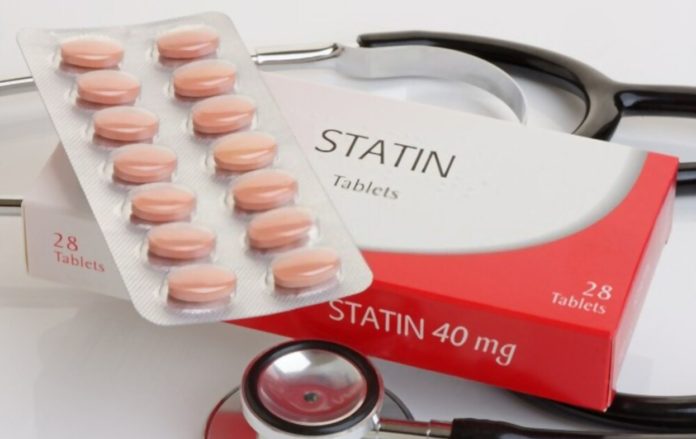Many people stop taking statins, cut back on how much they take or take them only a few times a week because they think the cholesterol-lowering drugs make their muscles hurt.
According to a recent study of over four million individuals, the true prevalence of statin intolerance is between six and ten percent worldwide.
Statin medication makes a considerable difference in reducing cardiovascular disease and death from it, according to strong and unequivocal data. Statins are one of the most often recommended medications. However, it has remained unclear how many people are actually intolerant of the medicine until recently, with reports ranging from 5 to 50 percent based on research, randomized controlled trials, and databases.
Researchers from the Medical University of Lodz and the University of Zielona Góra in Poland, led by Professor Maciej Banach, conducted a meta-analysis of 176 studies involving 4,143,517 patients as part of the Lipid and Blood Pressure Meta-Analysis Collaboration and the International Lipid Expert Panel (ILEP). The goal was to determine the overall prevalence of statin intolerance as well as the prevalence of statin intolerance according to various diagnostic criteria. They also wanted to figure out what factors make people more susceptible to statin intolerance.
In total, they found that 9.1 percent of people reported having the condition. The prevalence was considerably lower when the National Lipid Association, the ILEP, and the European Atherosclerosis Society used diagnostic criteria: 7 percent, 6.7 percent, and 5.9 percent, respectively.
Prof. Banach added: “These results were not a surprise to me but they were for many other experts. They show that in most cases statin intolerance is over-estimated and over-diagnosed, and they mean that around 93% of patients on statin therapy can be treated effectively, with very good tolerability and without any safety issues.
“Our findings mean that we should evaluate patients’ symptoms very carefully, firstly to see whether symptoms are indeed caused by statins, and secondly, to evaluate whether it might be patients’ perceptions that statins are harmful – so called nocebo or drucebo effect – which could be responsible for more than 50% of all symptoms, rather than the drug itself.”
People who were older, female, of Black or Asian ancestry, obese, or suffering from diabetes, underactive thyroid glands, or chronic liver or kidney failure were also more likely to be statin intolerant, according to the study. In addition, statin resistance was linked to medications that manage irregular heartbeat (arrhythmia), calcium channel blockers (commonly used for chest discomfort and high blood pressure), alcohol consumption, and higher statin doses. In these groups, the increased risk of statin intolerance ranged from 22% (heavy alcohol use) to 48% (being female).
“It is critically important to know about these risk factors so that we can predict effectively that a particular patient is at higher risk of statin intolerance. Then we can consider upfront other ways to treat them in order to reduce the risk and improve adherence to treatment. This could include lower statin doses, combination therapy and use of innovative new drugs,” said Prof. Banach.
The researchers recognize that their meta-analysis has certain limitations, such as discrepancies in patients included in different trials and a lack of information on alcohol intake and exercise kinds. However, because of the vast number of studies and patients included in the study, they have attempted to limit the possibility of bias from these.
“These results clearly show that patients needn’t be afraid of statin therapy as it is very well tolerated in as much as 93%, which is similar or even better than other cardiology drugs, including ones for reducing blood pressure and clotting or blocking of blood vessels,” said Prof. Banach, adding, “most cases of statin intolerance observed in clinical practice are associated with effects caused by patients’ misconceptions about the side effects of statins or may be due to other reasons.”
“Therefore, we should carefully evaluate symptoms, assessing in detail patients’ medical histories, when the symptoms appeared, specific details of pain, other medications the patients are taking, and other conditions and risk factors. Then we will see that statins can be used safely in most patients, which is critically important for reducing their cholesterol levels and preventing heart and blood vessel diseases and death.”
According to a review, personalized care can help to treat statin intolerance.
For example, they add, Statins are the cornerstone of lipid control, alongside a heart-healthy lifestyle (which should be supported for all patients throughout their lives). There are three levels of statin therapy: mild, moderate, and strong.
High-intensity, aiming for at least a 50% reduction in LDL-C. Examples:
- Atorvastatin 40–80 mg daily
- Rosuvastatin 20–40 mg daily.
Moderate-intensity, aiming at a 30% to 49% reduction in LDL-C. Examples:
- Atorvastatin 10–20 mg
- Fluvastatin 80 mg daily
- Lovastatin 40–80 mg
- Pitavastatin 1–4 mg daily
- Pravastatin 40–80 mg daily
- Rosuvastatin 5–10 mg
- Simvastatin 20–40 mg daily.
Low-intensity, aiming at a LDL-C reduction of less than 30%. Examples:
- Fluvastatin 20–40 mg daily
- Lovastatin 20 mg daily
- Pravastatin 10–20 mg daily
- Simvastatin 10 mg daily.
Source: 10.1093/eurheartj/ehac015
Image Credit: Getty
You were reading: Ways to avoid statin intolerance and side effects while lowering cholesterol levels
